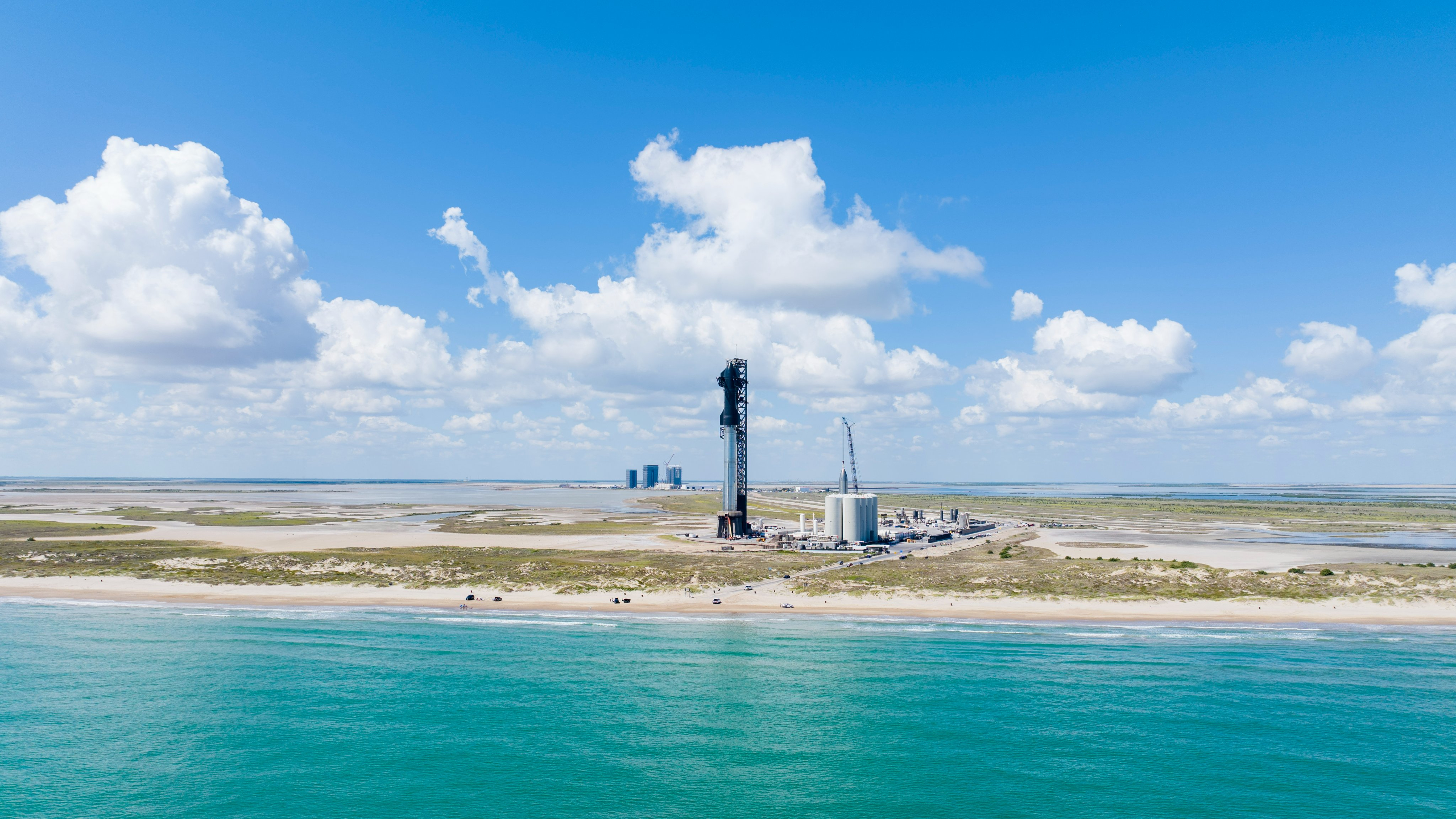SpaceX's giant Starship vehicle towers above turquoise waters in gorgeous photo

It's a rare thing when SpaceX's fully stacked Starship vehicle takes a back seat in a photo.
But it may just have happened, thanks to the natural beauty surrounding Starbase, SpaceX's seaside facility in South Texas. The company captured that beauty in a recent image of Starship on the pad, showing the huge rocket standing between the turquoise waters of a shallow bay, with sandy wetlands and the darker-blue Gulf of Mexico in the background.
"Starship stacked at Starbase ahead of flight, team continues to work with the FAA on a launch license," SpaceX wrote in a Sept. 30 post on X (formerly Twitter), which featured the photo. The FAA is the U.S. Federal Aviation Administration.
Related: Relive SpaceX's explosive 1st Starship test in incredible launch photos
As that post notes, SpaceX is gearing up to launch Starship, for the second time ever. The first mission, which lifted off this past April, aimed to send the vehicle's upper stage partway around Earth, with a splashdown targeted for the Pacific Ocean near Hawaii.
That didn't happen, however. Starship suffered a number of problems shortly after launch, including the failure of its two stages to separate, and SpaceX detonated the vehicle intentionally high above the Gulf of Mexico.
The FAA wrapped up its investigation of the April mishap last month but has not yet awarded a license for the second launch, whose aims will be similar to those of the first. SpaceX also needs to secure environmental approval from the U.S. Fish and Wildlife Service, according to Reuters.
Breaking space news, the latest updates on rocket launches, skywatching events and more!
SpaceX will likely aim to fly soon after those boxes are checked. Company founder and CEO Elon Musk has said that Starship is ready to go from a technical standpoint.
Starship is the biggest and most powerful rocket ever built, boasting nearly twice the thrust at liftoff as NASA's Space Launch System, the brawniest launcher currently in operation.
The SpaceX vehicle is also designed to be fully and rapidly reusable, the breakthrough needed to make Mars colonization and other ambitious exploration feats economically feasible, according to Musk.

Michael Wall is a Senior Space Writer with Space.com and joined the team in 2010. He primarily covers exoplanets, spaceflight and military space, but has been known to dabble in the space art beat. His book about the search for alien life, "Out There," was published on Nov. 13, 2018. Before becoming a science writer, Michael worked as a herpetologist and wildlife biologist. He has a Ph.D. in evolutionary biology from the University of Sydney, Australia, a bachelor's degree from the University of Arizona, and a graduate certificate in science writing from the University of California, Santa Cruz. To find out what his latest project is, you can follow Michael on Twitter.
